Gestational Diabetes Mellitus (GDM) is glucose intolerance with onset during pregnancy. In true GDM, glucose usually returns to normal by six weeks postpartum, although women with GDM have an increased risk of developing type 2 diabetes mellitus later in life. The primary concern for any woman with this disorder is controlling the balance between insulin and blood glucose levels to prevent hyperglycemia or hypoglycemia. Women with gestational diabetes are at an increased risk of complications during pregnancy and delivery.
Nursing Care Plans and Management
The nursing care plan for gestational diabetes mellitus involves providing the client or couple with information regarding the disease condition, teaching insulin administration, achieving and maintaining normoglycemia, and evaluating the present client or fetal well-being.
Nursing Problem Priorities
The following are the nursing priorities for patients with gestational diabetes mellitus (GDM):
- Monitor and manage blood glucose levels.
- Provide dietary guidance and develop a personalized meal plan to maintain stable blood sugar levels.
- Educate patients on self-monitoring of blood glucose and proper technique for glucose testing.
- Collaborate with healthcare professionals to adjust medication, such as insulin, if necessary.
- Monitor fetal growth and development through regular ultrasounds and other tests.
- Offer support and counseling to address emotional and psychological concerns related to GDM.
- Promote physical activity and exercise, as recommended by healthcare providers.
- Educate patients on the potential risks of GDM to both the mother and baby.
- Schedule regular prenatal visits to monitor maternal and fetal health.
Nursing Assessment
Assess for the following subjective and objective data:
- See nursing assessment cues under Nursing Interventions and Actions.
Nursing Diagnosis
Following a thorough assessment, a nursing diagnosis is formulated to specifically address the challenges associated with gestational diabetes mellitus (GDM) based on the nurse’s clinical judgment and understanding of the patient’s unique health condition. While nursing diagnoses serve as a framework for organizing care, their usefulness may vary in different clinical situations. In real-life clinical settings, it is important to note that the use of specific nursing diagnostic labels may not be as prominent or commonly utilized as other components of the care plan. It is ultimately the nurse’s clinical expertise and judgment that shape the care plan to meet the unique needs of each patient, prioritizing their health concerns and priorities.
Nursing Goals
Goals and expected outcomes may include:
- Within 4 hours of nursing intervention, the patient will verbalize understanding of the individual treatment regimen and the need for regular glucose self-monitoring.
- Within 8 hours of nursing action, the patient will maintain fasting serum blood glucose levels between 60-100 mg/dl and 1-hour postprandial of no higher than 140 mg/dl and will be free of signs and symptoms of diabetic ketoacidosis (fruity-scented breath, excessive thirst, frequent urination, weakness, confusion).
- The client will gain at least 25-30 lbs prenatally or as appropriate for pre-pregnancy weight.
- The client follows the prescribed dietary intake appropriately.
- The client is free from signs of hypoglycemia or hyperglycemia.
- The client identifies the proper food and fluid choices for her diet.
- The client will be free of signs and symptoms of diabetic ketoacidosis (fruity-scented breath, excessive thirst, frequent urination, weakness, and confusion).
- The client will maintain vital signs within the normal range.
- The client will maintain blood glucose levels within the normal range.
- The client will deliver the infant vaginally and without complications.
- The fetus will display reactive normal stress tests and negative OCT and CST.
- The fetus will be delivered full-term and vaginally without complications.
- The fetus will display weight within the normal range.
- The fetus will have a normal blood glucose level upon birth.
- The client will verbalize understanding of the procedures, laboratory tests, and activities involved in controlling diabetes.
- The client will understand the importance of careful attention to nutrition, exercise, and home monitoring of glucose levels during pregnancy.
- The client will participate in the management of diabetes during pregnancy.
- The client will describe the appropriate nutrition and exercise program.
- The client will demonstrate proficiency in self-monitoring and insulin administration.
- The client will be free of infection.
- The client will identify interventions to prevent or reduce the risk of infection.
- The client will participate and adhere to the treatment plan against infection.
Nursing Interventions and Actions
Therapeutic interventions and nursing actions for patients with gestational diabetes mellitus (GDM) may include:
1. Managing Unstable Blood Glucose Levels
If a woman’s insulin production is insufficient, glucose cannot be used by the body cells. The cells register the need for glucose, and the liver quickly converts stored glycogen to glucose to increase the serum glucose level. However, because insulin is unavailable, the body cells still cannot use the glucose, so the serum glucose levels rise.
Perform a prenatal screening test to identify gestational diabetes mellitus.
Suppose the woman does not have preexisting diabetes mellitus. In that case, a prenatal screening test is routinely performed between 24 and 28 weeks gestation, but it may be done earlier if risk factors are present. The woman drinks 50g of an oral glucose solution, and a blood sample is taken 1 hour later and analyzed for glucose. If the blood glucose level is 130 to 140 mg/dL or higher, a more complex, 3-hour glucose tolerance test is done.
Note signs of hyperglycemia (confusion, increased thirst, frequent urination, changes in visual acuity) or hypoglycemia (dizziness; tremors; lethargy; excessive sweating, pale, cool, moist skin).
Observing these signs may alert the nurse to developing hyperglycemia or hypoglycemia. If the woman cannot increase her insulin production, she will have periods of hyperglycemia as glucose accumulates in the blood. Because the fetus continuously draws glucose from the mother, maternal hypoglycemia can occur between meals and night.
Monitor the client’s vital signs, uterine contractions, and fetal heart rate (FHR).
Determine the client’s progress through monitoring and physical exam and inform her of signs of beginning labor. Increased FHR is a sign of possible fetal distress. Uterine contractions could mark the beginning of preterm labor.
Assess understanding of the effect of stress on diabetes. Teach the client about stress management and relaxation measures.
Hormones released during stress conditions (stress hormones) are counter-regulatory in glucose metabolism because they can induce hyperglycemia. During stress situations, insulin sensitivity is generally reduced, mainly due to signaling defects downstream of the insulin receptor that reduce glucose transport in insulin-sensitive tissues such as the liver, muscle, and fats. In contrast, glucose production is higher due to increased hepatic gluconeogenesis. (Marcovecchio & Chiarelli, 2012).
Teach and demonstrate to the client how to monitor blood glucose levels using a finger-stick method.
The pregnant diabetic woman may monitor her blood glucose levels several times a day as directed by the healthcare provider. The client can test their own blood glucose level in their homes. The client not only must be skilled in the techniques but also understand the results and how to incorporate them into the daily regimen. This means involving the entire healthcare team in ongoing supervision, demonstrations, and support. To ensure a successful pregnancy, the client must keep her blood glucose levels as close to normal as possible.
Provide information regarding any required changes in diabetic management, e.g., use of human insulin only, changing from oral diabetic drugs to insulin, and self-monitoring of serum blood glucose levels at least twice a day (e.g., before breakfast and before dinner).
Metabolism and maternal/fetal needs fluctuate during gestation, requiring close monitoring and adaptation. The dose and frequency of insulin injections are tailored to a woman’s individual needs. Insulin is often administered on a sliding scale, in which the woman varies her dose of insulin based on each blood glucose level. Two-thirds of daily insulin needs are given before breakfast and one-third before dinner. The client should eat immediately after injecting insulin to avoid hypoglycemia.
Provide information regarding the signs, symptoms, and differences between hyperglycemia and hypoglycemia.
The client who takes insulin may experience episodes of hypoglycemia or hyperglycemia. Therefore, she should be taught how to recognize and respond to each condition, and family members are also included in the teaching. Symptoms and interventions include:
Hypoglycemic episodes occur most frequently in the first trimester, owing to continuous fetal drain on serum glucose and amino acids, and too low levels of human placental lactogen (HPL). The blood glucose level that indicates hypoglycemia is usually <60 mg/dL. The client may feel excessive hunger; trembling; weakness; faintness; lethargy; headache; irritability; sweating, pale, cool, moist skin; and even loss of consciousness.
Hyperglycemia results from inadequate insulin, reduced activity, excessive food intake, and infection during pregnancy. A blood glucose level of >120 mg/dL indicates hyperglycemia. Signs of symptoms of hyperglycemia include fatigue; flushed, hot skin; dry mouth; excessive thirst; dehydration; frequent urination; nausea and vomiting; rapid, deep respirations; acetone odor of the breath (which indicates ketoacidosis); and depressed reflexes. To correct a hyperglycemic episode, teach the client to evaluate her food intake and emphasize the importance of honesty regarding her food intake to avoid inappropriately adjusting her insulin dose.
Instruct the client on how to treat symptomatic hypoglycemia.
During hypoglycemic periods, the client may drink an 8oz glass of milk or juice or eat a piece of fruit or two crackers to relieve the hypoglycemic episode. She may then repeat in 15 minutes if serum glucose levels remain below 70 mg/dl.Using plenty of simple carbohydrates to treat hypoglycemia causes serum glucose values to elevate. A combination of complex carbohydrates and protein maintains normoglycemia longer and helps maintain the stability of serum glucose throughout the day.
Discuss the type of insulin, dosage, and schedule.
Division of insulin dosage considers basal maternal needs and mealtime insulin-to-food ratio and allows more freedom in meal-scheduling. The total daily dosage is based on gestational, current maternal body weight, and serum glucose levels. Typically, insulin dosage may be reduced to avoid hypoglycemia in the first trimester. In the second trimester, increasing placental hormones increase insulin resistance, and the dosage of insulin may have to be increased. Insulin requirements may decrease again at 38 weeks gestation. Insulin Aspart and lispro are fast-acting insulins that are highly effective if given before meals.
Monitor serum blood glucose levels (fasting blood sugar, 1-hour postprandial) on the first visit, and then as indicated by the client’s condition.
The client should obtain fasting and 1-hour postprandial values four times a day, and goals include fasting numbers of 90 mg/dL and below and postprandial values less than 140 mg/dL. The client monitors her blood glucose levels by using a glucometer. The results should be documented by the client and presented to her healthcare provider to determine if any adjustments in her insulin or oral diabetic regimen are necessary.
Obtain results of glycosylated hemoglobin (HbA1c) every 2-4weeks.
The measurement of HbA1c, the amount of glucose attached to hemoglobin, is used to detect the degree of hyperglycemia present. Measuring HbA1c is advantageous not just because it offers a present value of glucose but because it reflects the average blood glucose level over the past 4 to 6 weeks.
Administer intravenous fluids and insulin additives or oral diabetic agents as prescribed.
Correcting blood glucose is vital to both maternal and fetal well-being. Insulin therapy is needed by clients who cannot control their blood glucose levels with diet or oral therapy. Short-acting insulin may be used alone or with an intermediate type. The use of insulin pumps has also proved great value for glucose control in pregnant and nonpregnant clients with diabetes mellitus and reduces hypoglycemic events.
Coordinate multispecialty care conferences as appropriate.
Provides an opportunity to review the management of both pregnancy and diabetic conditions and plan for special needs during intrapartum and postpartum periods. A dietitian can determine foods to meet her needs and help find solutions to adhering to the diet. Referral to a diabetes management center can also be helpful. During birth, neonatal nurses and a neonatologist are often present.
Prepare for hospitalization if diabetes is not controlled.
Assist the client in transfer to the hospital unit. Infant morbidity is linked to maternal hyperglycemia-induced fetal hyperinsulinemia. Continuous monitoring is necessary to detect if uterine contractions and preterm birth were halted.
2. Promoting Adequate Nutrition
Nutrition requirements of women diagnosed with gestational diabetes mellitus are similar to non-GDM pregnancies. Still, they require a special focus on dietary modification to ensure healthy and mindful eating to achieve and maintain maternal euglycemia. Change preparedness is high during pregnancy, as emotion is increased because of perceived risk but with the possibility of improved outcome with change. There is also greater motivation, a sense of self-efficacy, and a willingness to acquire new skills. This is particularly relevant for GDM pregnancy, where nutrition and lifestyle change provides the bedrock for managing the condition (Kapur et al., 2021).
Assess and record dietary patterns and caloric intake using a 24-hour recall.
Dietary patterns help evaluate the client’s understanding and compliance to a strict dietary regimen. Identifying both the good eating habits and not-so-good eating habits in the current eating pattern of the client can help individualize diet advice (Kapur et al., 2021).
Weigh the client every prenatal visit. Encourage the client to monitor weight at home between visits periodically.
The combination of high pre-pregnancy body mass index (BMI) and excessive weight gain during pregnancy increases the risk for GDM, preeclampsia, large for gestational age infants, and complications for both the mother and the newborn at delivery. According to a WHO report, high-risk women who follow lifestyle change interventions (both diet and exercise) reduce the risk of excessive gestational weight gain (GWG), thereby reducing the risk of perinatal complications (Kapur et al., 2021).
Evaluate the influence of cultural factors.
Identify what the client perceives as normal dietary practices and food preferences, and dietary patterns that can be strengthened or altered, as indicated. For instance, in South East Asia, rice is the staple food, and this may pose major challenges for women from this background to curtail their rice intake. The diet for South Asians is similarly heavily reliant on carbohydrates, and multiple sources of carbohydrates are often included in any one meal (Yuen & Wong, 2015).
Educate the client and family members about the importance of regular meals and snacks (e.g., three meals or four snacks) when taking insulin.
Eating very frequent small meals improves insulin function. A balanced food intake is divided among meals and at least three to four snacks throughout the day to maintain stable blood glucose levels. The timing and content of meals and snacks may require adjustment to prevent early-morning hypoglycemia. Foods that release glucose slowly are preferred to avoid rapid changes in blood glucose. The bedtime snack is important to minimize the risk of hypoglycemia.
Educate the client on easy-to-implement tools to make nutrition counseling more effective.
The T-shaped plate model, especially for the main meals, is effective as a basic teaching tool to control portion size and plan meals more effectively. Visuals of portion size and use of household containers (cups and glasses) as measures of food quantity are practical and easy teaching tools to help improve adherence to the quantity of food consumed. Writing a food journal and analyzing them together with the nurse or healthcare provider help to understand the effect of different foods on glucose levels, adjust the diet to change the portion size of carbohydrates in different meals, and improve glycemic control (Kapur et al., 2021).
Instruct the client about proper carbohydrate restriction.
Carbohydrate restriction remains the most common approach for medical nutrition therapy in GDM. According to the American College of Obstetricians and Gynaecologists (ACOG) and the endocrine society, restricting carbohydrates in all GDM clients on the medical nutrition program is recommended (Kapur et al., 2021). A 1,800 to 2,400 calorie diet, divided into three meals and three snacks to try and keep carbohydrates evenly distributed during the day, so the glucose level remains constant, is a typical nutrition regimen during pregnancy. Ideally, 20% of dietary calories should be from protein, 40% to 50% from carbohydrates, and up to 30% from fat. Urge the client, however, not to reduce their intake to below 1,800 calories during pregnancy as an intake this low in carbohydrates can lead to fat breakdown and acidosis.
Encourage the client to include fiber and reduce saturated fats and cholesterol in her diet.
Dietary fiber decreases postprandial hyperglycemia and lowers insulin requirements. Increased consumption of saturated and total fats could worsen insulin requirements. During pregnancy, adequate protein intake is essential to prevent the depletion of maternal stores and prevent muscle breakdown from supplying fetal needs (Kapur et al., 2021). Urge the client to make her final snack of day one of protein and a complex carbohydrate (egg and whole grain toast, hummus, and whole-grain crackers) to allow slow digestion during the night.
Adjust diet or insulin regimen to meet individual needs.
Prenatal metabolic needs change throughout the trimesters, and adjustment is determined by weight gain and laboratory test results. Typically, insulin dosage may have to be reduced to avoid hypoglycemia in the first trimester, when nausea decreases appetite and physical activity may be reduced. Increasing placental hormones increase insulin resistance in the second trimester, and the insulin dosage may increase. Insulin requirements decrease again at 38 weeks gestation.
Recommend monitoring urine ketones on awakening and when a planned meal or snack is delayed.
Insufficient caloric intake is reflected by ketonuria, indicating a need for an increased intake of carbohydrates or additional snacks in the dietary plan (e.g., recurrent presence of ketonuria on awakening may be eliminated by 3 am a glass of milk). Adjustment of insulin type, dosage, and frequency must be required. However, ketonuria accompanied by hyperglycemia requires prompt evaluation for diabetic ketoacidosis, rapidly fatal for the fetus.
Refer to a dietician for an individualized diet plan and counsel dietary questions.
A dietician can provide an optimum nutrition plan for the client.
3. Promoting Safety and Preventing Injury
In diabetes mellitus, cells essentially starve because they cannot obtain glucose. The body compensates by metabolizing protein and fat for energy, which causes ketones and acids to accumulate. Estrogen, progesterone, insulinase (an enzyme produced by the placenta), and increased prolactin levels increase the resistance of cells to insulin and increase insulin breakdown, resulting in the accumulation of glucose in the bloodstream. This puts the mother at risk for hyperglycemia, gestational hypertension, cesarean birth, preterm labor, abruption placenta, spontaneous abortion, and diabetic ketoacidosis.
Assess the client for signs of placenta abruption, such as vaginal bleeding and abdominal tenderness.
Placental abruption, the premature detachment of the placenta from the uterine wall before birth and after 20 weeks of gestation, is one of the most significant determinants of maternal morbidity and perinatal morbidity and mortality. Vascular changes associated with diabetes that causes placental dysfunction and separation from the uterine wall place the client at risk for abruption placenta (Downes et al., 2017).
Assess and monitor for signs of edema.
In the early stage of insulin resistance, hyperinsulinemia would cause sodium reabsorption by the kidney tubules, which causes edema. The increased vasoconstriction leads to the smooth muscle of the small artery proliferation and narrowing of the blood vessels, resulting in increased systolic pressure (Diao et al., 2021).
Determine fundal height; check for edema of extremities and dyspnea.
Polyhydramnios is a pathologic excess of amniotic fluid volume (AFV) in pregnancy. In cases of maternal hyperglycemia, fetal urine excretion is thought to be due to the increase of osmotic diuresis contributing to increased AFV production (Hwang & Bordoni, 2021).
Monitor for signs and symptoms of preterm labor. Hydramnios may predispose the client to early labor.
The client may present in preterm labor or premature rupture of membranes, and excessive amniotic fluid may result in a non-vertex fetal presentation or cord prolapse. Delivery is recommended at a tertiary facility due to potential maternal and neonatal morbidity and mortality associated with severe polyhydramnios (Hwang & Bordoni, 2021).
Note White’s classification for diabetes. Assess the degree of diabetic control (Pederson’s Criteria).
Priscilla White developed white’s classification in 1949, which was revised in 1980. It estimates the risks of “perinatal wastage” in pregnancies complicated by diabetes. Multiple studies have evaluated the validity of White’s classification, including Pederson et al., who set out to improve the methods for identifying diabetic pregnancies at risk for adverse outcomes. They created a new system by identifying four “prognostically bad signs of pregnancy,” which included clinical pyelonephritis; precoma and severe acidosis; toxemia; and maternal neglecters (late prenatal care, poor social circumstances) (Bennett et al., 2015).
Closely monitor the client’s vital signs, fetal heart rate (FHR), and uterine contractions.
Helps determine the client’s progress by monitoring and physical exam. Inform the client and the healthcare provider of any signs of beginning labor. An increased FHR is a sign of fetal distress, and uterine contractions could mark the beginning of preterm labor.
Educate the client on performing home blood glucose monitoring four times/day.
The client must keep her blood glucose levels as close to normal as possible and be taught the signs and symptoms of hypoglycemia and hyperglycemia. Additionally, the client should monitor her blood glucose levels several times a day as instructed by the healthcare provider to allow greater accuracy than urine testing because the renal threshold for glucose is lowered during pregnancy and facilitates tighter control of serum glucose levels.
Monitor for ketones in the urine daily.
Urine ketones may be checked to identify the need for more carbohydrates. If the client’s carbohydrate intake is insufficient, she may metabolize protein and fat to produce glucose, resulting in ketonuria. However, ketonuria accompanied by hyperglycemia requires prompt evaluation for diabetic ketoacidosis. Ketoacidosis can be rapidly fatal to the fetus.
Monitor the client closely if tocolytic drugs are used to arrest labor.
Tocolytic drugs such as beta-agonists stimulate sympathetic nerves, causing hyperglycemia. Atosiban, an oxytocin antagonist, contrasts with oxytocin, which suppresses cortisol, thereby increasing the serum level of cortisol and subsequently increasing blood glucose levels (Ko et al., 2021).
Monitor serum glucose level each visit.
The client must be aware of being hypoglycemic and ketoacidosis caused by the fetus’s constant use of glucose. Therefore, regular monitoring of blood glucose levels should be performed by the nurse or the client herself at home.
Monitor hematocrit and hemoglobin levels on the initial visit, then during the second trimester and at term.
Hemoglobin measurements during the first antenatal visit have become a standard for pregnant women to determine possible risks of feto-maternal complications. Iron is said to interfere with the action of insulin and impairs glucose entry into the adipocytes resulting in overt hyperglycemia. Therefore, it is suggested that the level of body iron stores may play a role in GDM development due to its effect on insulin secretion and function (Tiongco et al., 2018).
Obtain HbA1c every three months, as indicated.
Glycosylated hemoglobin (HbA1c) is performed every three months to indicate long-term (4 to 6 weeks) glucose control; lower values indicate successful glucose management of the pregnant diabetic. The normal upper level of HbA1c is 6% of total hemoglobin.
Monitor for total protein excretion, creatinine clearance, BUN, and uric acid levels.
The risk of renal morbidity in GDM is reported and associated with overt diabetes. Elevated serum creatinine in GDM clients may be a warning sign of possible renal disease since kidney-related impairments remain clinically silent until an advanced stage (Mishra et al., 2021). A creatinine clearance test may be ordered each trimester. A normal creatinine clearance rate suggests a woman’s vascular system is intact because kidney function is normal. By default, this also implies uterine perfusion is also adequate.
Prepare the client for ultrasonography at 28 and 36 to 38 weeks of gestation as indicated.
An ultrasound examination may be taken at week 28 and then again at weeks 36 to 38 to determine fetal growth, amniotic fluid volume, placental location, and biparietal diameter. Oligohydramnios may indicate fetal growth restriction or a fetal renal abnormality, whereas polyhydramnios may indicate gastrointestinal malformation or poorly controlled disease.
Schedule for ophthalmologic examination during the first trimester for all clients and in second and third trimesters if clients are at class D, E, F.
An ophthalmic examination should be done once during the pregnancy for a woman with gestational diabetes and at each trimester for women with known diabetes because of common background retinal changes that are common in diabetes, such as increased exudate, dot hemorrhage, and macular edema, can progress or originate during pregnancy. Laser coagulation therapy may improve the client’s condition and reduce optic fibrosis.
Administer glucagon as an IV infusion or subcutaneously in case of insulin shock.
Glucagon can be administered as an IV infusion or subcutaneously. Glucagon is available as a dehydrated powder termed a “Glucagon Emergency Kit,” which is reconstituted with sterile water. Severe insulin shock or hypoglycemia is life-threatening, and glucagon has attractive traits in the diabetic population due to its simplicity of use and safe administration (Morris & Baker, 2021).
Administer intravenous fluids and insulin therapy as indicated to correct diabetic ketoacidosis (DKA).
Fluid resuscitation, maintenance, and insulin therapy are mainstays of management in diabetic ketoacidosis. In clients with DKA, the fluid deficit could be up to 10-15% of the body weight. Immediate fluid resuscitation is vital to correct hypovolemia, restore tissue perfusion, and clear ketones. Intravenous insulin by continuous infusion is the standard of care. In uncomplicated, mild DKA, subcutaneous injection of insulin lispro hourly may be safer and more cost-effective than regular intravenous insulin (Lizzo et al., 2021).
4. Preventing Macrosomia and Fetal Injury
Infants of women with poorly controlled diabetes tend to be large (>10 lb) because the increased insulin the fetus must produce to counteract the overload of glucose they receive acts as a growth stimulant. A macrosomic infant may create birth problems at the end of the pregnancy because of cephalopelvic disproportion or an increased risk for shoulder dystocia. There is also a high incidence of congenital anomaly, spontaneous miscarriage, and stillbirth in women with uncontrolled diabetes.
Determine White’s classification for diabetes; explain classification and significance to client/couple.
The fetus is at less risk if White’s classification is A, B, or C. The client with classification D, E, or F who develops kidney or acidotic problems or gestational hypertension is at high risk. As a means of determining prognosis for the perinatal outcome, White’s classification has been used in conjunction with (1) evaluation of diabetic control or lack of control and (2) presence or absence of Pedersen’s prognostically bad signs of pregnancy (PBSP), which includes acidosis, mild/severe toxemia, and pyelonephritis (Bennett et al., 2015).
Review the client’s diabetic control before conception.
Strict control (normal HbA1c levels) before conception helps reduce the risk of fetal mortality and congenital abnormalities. The presence of fasting hyperglycemia (>105 mg/dL or >5.8 mmol/L) may be associated with an increase in the risk of intrauterine fetal death during the last 4-8 weeks of gestation. GDM of any severity increases the risk of fetal macrosomia (American Diabetes Association, 2022).
Assess for signs of hypertensive disorders of pregnancy (edema, hypertension, proteinuria).
About 12-13% of diabetic individuals develop hypertensive disorders owing to cardiovascular changes associated with diabetes. Bennett et al. (2015) revealed in their study that hypertension is associated with a significantly increased incidence of small for gestational age (SGA) infants, preeclampsia, preterm delivery, and composite perinatal outcome. The presence of hypertension appeared to have a significant effect on adverse outcomes.
Assess the client’s fundal height each visit.
Monitoring the client’s fundal height is useful in identifying abnormal growth patterns (macrosomia or IUGR, small or large gestational age [SGA/LGA]). Hydramnios may develop because a high glucose concentration causes extra fluid to shift and enlarge the amount of amniotic fluid. A macrosomic infant may create birth problems at the end of the pregnancy because of cephalopelvic disproportion.
Assess fetal movement and fetal heart rate each visit as indicated. Encourage the client to periodically record fetal movements at about 18 weeks gestation, then daily from 34 weeks gestation.
Fetal movement and fetal heart rate may be negatively affected when placental insufficiency and maternal ketosis occur. The client may be asked to self-monitor fetal well-being by recording how many movements occur an hour (usually about ten fetal kicks. Be certain that the client understands that fetal activity varies depending on her activity and meal patterns to prevent her from becoming frightened by normal variations.
Monitor the client’s urine for ketones.
Irreparable CNS damage or fetal death can occur due to maternal ketonemia, especially in the third trimester. Urine ketone monitoring may be useful in detecting insufficient caloric or carbohydrate intake in clients treated with calorie restriction (American Diabetes Association, 2022).
Assess the client for fruity or acetone breath.
A fruity or acetone breath is indicative of diabetic ketoacidosis (DKA). Ketoacidosis can be rapidly fatal to the fetus. Early detection and prompt treatment of DKA in pregnancy results in successful fetal outcomes (Edo et al., 2019).
Assess HbA1c every 4-6 weeks, as indicated.
The incidence of congenitally malformed infants is increased in women with high HbA1c levels (greater than 8.5%) early in pregnancy or before conception. HbA1c indicates long-term glucose control; lower values indicate successful glucose management. However, HbA1c monitoring cannot be used as a guide to adjust daily insulin needs during pregnancy, but it may warn of risk for fetal anomalies.
Assess glycosylated albumin level at 24-28 weeks’ gestation, especially for a client in a high-risk category.
Serum test for glycosylated albumin reflects glycemia over several days. It may gain acceptance as a screening tool in determining GDM because it does not involve potentially harmful glucose loading with OGTT. Current studies suggest that glycosylated albumin is more associated with infant complications related to gestational diabetes. Glycosylated albumin also responds better to situations of postprandial hyperglycemia and fluctuations in blood glucose. Thus, it could reflect the glycemic status of GDM clients more precisely (Liu et al., 2021).
Assess the client’s creatinine clearance levels periodically.
There is a slight parallel between renal vascular damage and impaired uterine blood flow. A creatinine clearance test may be ordered each trimester. A normal creatinine clearance rate suggests a woman’s vascular system is intact because the kidney function is normal. By default, it also implies uterine perfusion is also adequate.
Educate the client about the possible effects of diabetes on fetal growth and development.
Educating the client helps them make informed decisions about managing regimens and may increase cooperation. The expectant mother may be anxious about the outcome for herself and her child. Therapeutic communication helps her to express her frustrations and fears.
Educate the client about home blood glucose monitoring and diabetic management.
The ACOG recommends fasting values below 95 mg/dL (5.27 mmol/L), 1-h postprandial values below 130-140 mg/dL (7.22-7.77 mmol/L), and 2-h postprandial values below 120 mg/dL (6.66 mmol/L). Studies revealed lower perinatal mortality rates for diabetic pregnancies when mean glucose concentrations were kept in that reference interval. Postprandial testing was associated with lower rates for large-for-gestational-age offspring, fewer cesarean births, and less neonatal hypoglycemia (Coustan, 2013).
Explain the implications of performing periodic nonstress tests (NSTs).
Fetal activity and movement are good predictors of fetal wellness. Activity level decreases before alterations in FHR occur. Routine monitoring includes twice-weekly non-stress tests and amniotic fluid index, a strategy that has been shown to reduce stillbirth in pregnancies with pre-gestational GDM or GDM (Dickens & Thomas, 2019).
Educate the client about the importance of amniocentesis using the lecithin-sphingomyelin ratio (L/S) ratio and the presence of phosphatidylglycerol (PG).
A lecithin/sphingomyelin ratio by amniocentesis is usually performed by week 36 of pregnancy to assess fetal maturity. In pregnancies complicated by diabetes, this ratio tends not to show maturity as early as in other pregnancies, probably because the synthesis of phosphatidylglycerol, the compound that stabilizes surfactant, is delayed if hyperglycemia is present. Because lung surfactant does not appear to form as early in these fetuses as in others, the presence of phosphatidylglycerol at amniocentesis is used to indicate lung maturity for these infants.
Monitor labor contractions and fetal heart rate during labor.
Labor contractions and fetal heart sounds need to be conscientiously monitored during labor to ensure early detection of placental dysfunction.
Assist in obtaining alpha-fetoprotein (AFP) levels are at 15-17 weeks’ gestation.
Because women with diabetes tend to have infants with a higher than normal incidence of birth anomalies, a client will have a serum alpha-fetoprotein level obtained at 15 to 17 weeks to assess for a neural tube defect.
Perform nonstress test (NST) and oxytocin challenge test (OCT)/contraction stress test (CST), as appropriate.
NST and OST assess fetal well-being and adequacy of placental perfusion. Placental functioning may be assessed by a weekly nonstress test or biophysical profile during the last trimester of pregnancy if a woman is in good control, or a daily nonstress test if her regulation is poor. GDM mothers with risk factors may begin twice-weekly nonstress tests and an amniotic fluid index between 32 and 36 weeks (Coustan, 2013).
Prepare the client for ultrasonography, as indicated.
Ultrasonography is useful in confirming gestation dates and helps to evaluate intrauterine growth restriction (IUGR), macrosomia, and excess amniotic fluid. Many practitioners perform third-trimester ultrasounds in all women with GDM to assess fetal weight and identify cases where elective induction or cesarean birth may be indicated to prevent birth complications (Dickens & Thomas, 2019).
Assist as necessary with biophysical profile (BPP) assessment.
BPP provides a score to assess fetal well-being/risk. The criteria include NST results, fetal breathing movements, amniotic fluid volume, fetal tone, and fetal body movements. For each criterion met, a score of 2 is given. A total score of 8-10 is reassuring, a score of 4-7 indicates a need for further evaluation and retesting, and a score of 0-3 is ominous. BPP evaluation carried out twice a week can prevent fetal death in diabetic pregnant women (Pandraklakis & Pappa, 2019).
Assist with preparation for delivery of fetus vaginally or surgically if test results indicate placental aging and insufficiency.
American College of Obstetricians and Gynecologists (ACOG) recommends that for women with GDM well controlled on nutritional therapy alone, delivery should not be induced before 39 weeks. Expectant management up to 40 6/7 weeks is reasonable with appropriate monitoring. For women with GDM requiring medication, delivery between 39 0/7 and 39 6/7 weeks is recommended. In preparation for scheduled cesarean birth or labor induction, the long-acting insulin dose should be reduced by 50%. On the morning of the surgery or induction, insulin or OAD should be held. Intrapartum glycemic control can be maintained by rotating fluid protocol which uses 5% dextrose in normal saline infusion for maternal glucose <100 mg/dL, lactated Ringer’s or normal saline for glucose >101 mg/dL, and rapid-acting infusion for glucose >140 mg/dL titrated to goal glucose 100 mg/dL (Dickens & Thomas, 2019).
5. Initiating Infection Control Measures and Preventing Infections
Pregnant women with gestational diabetes mellitus are at increased risk for infections of the genital tract. Diabetic pregnant women are more likely to acquire genital infections because of poor metabolic control, higher body mass index (BMI), and potentially impaired leukocyte function. Moreover, pregnancy itself harbors an immunocompromised state, leading to an increased risk of vaginal Candida colonization. As insulin resistance increases along with gestational age, the susceptibility for infections in diabetic pregnant women may rise with the duration of pregnancy and poor glycemic control (Marschalek et al., 2016).
Assess the client for urinary tract infection (UTI) signs.
Observe the client for any signs of infection and inflammation, such as fever, flushed appearance, or cloudy urine. Early detection of UTI may prevent the occurrence of pyelonephritis, which can contribute to premature labor. Diabetes mellitus has been associated with the reduced response of T cells, neutrophil function, and disorders of humoral immunity. (Alves et al., 2012).
Determine the nature of any vaginal discharge.
If glycosuria is present, a client is more likely to develop monilial vulvovaginitis, caused by Candida albicans and may lead to oral thrush in the newborn. Candida and yeast normally reside in the vagina, and their unchecked growth is restricted by lactobacillus. The common complaints of vaginal thrush are abnormal vaginal discharge, vaginal itch, painful micturition, and dyspareunia (Sadaqat et al., 2020).
Inspect the client’s feet, noting the presence of ulcers, infected ingrown toenails, or other problems requiring interventions.
Foot injuries, sensory neuropathy, and impaired circulation are associated with many complications in diabetics, including skin and soft tissue infections. The initial assessment should evaluate the foot and the general situation of the client. Local signs of infection are increased temperature, erythema, pain, lack of functionality, and edema (Nikoloudi et al., 2018).
Assess the client’s vital signs, especially temperature.
Local and systemic signs of infection may be present and include fever, chills, tachycardia, hypotension, increased respiratory rate, fatigue, and metabolic disorders. While treated as an outpatient, careful monitoring is needed, and infections should be reassessed in 2-4 days or immediately if the situation worsens (Nikoloudi et al., 2018).
Promote good handwashing by staff, the client, and family members.
Good hand hygiene reduces the risk of cross-contamination. Healthcare-associated infections (HAIs) affect hundreds of millions of individuals worldwide. Performing hand hygiene is widely accepted as a key strategy of infection prevention and control to prevent HAIs, as healthcare workers’ contaminated hands are the vehicle most often implicated in the cross-contamination of pathogens in healthcare (Vermeil et al., 2019).
Caution the client not to self-medicate with vaginal creams available over-the-counter.
Choice of self-treatment may be inappropriate/mask infection. Self-medication carries a serious risk of drug interactions, polypharmacy, misdiagnosis, excessive drug dosage use, prolonged drug use, incorrect drug choice, rare but severe adverse events, dependence or abuse, and increased antimicrobial resistance. The Food and Drug Authority (FDA) classified drugs in categories according to their safety in pregnancy, from class A (the safest) to class X (the teratogenic group). Unfortunately, only a few drugs (40%) are listed in this classification, indicating that only a few drugs are safe during pregnancy because self-medication is common among pregnant women (Marwa et al., 2018).
Maintain aseptic technique for invasive procedures such as IV and catheter insertion.
High glucose in the blood creates an excellent medium for bacterial growth. The main pathogenic mechanisms are hyperglycemic environment increasing the virulence of some pathogens; lower production of interleukins in response to infection; glycosuria; gastrointestinal and urinary dysmotility (Alves et al., 2012).
Provide catheter and perineal care when indicated.
Teach the client to clean from front to back after elimination to minimize the risk of UTI. Candida organisms probably access the vagina via migration across the perianal area from the rectum. Nearly 10% of women in their reproductive age have this recurrent infection, translating to about 140 million women being affected worldwide (Sadaqat et al., 2020).
Encourage adequate dietary and fluid intake (at least 2500 mL daily if not contraindicated).
Increased fluid intake reduces the client’s susceptibility to infection. Increased urinary flow prevents stasis and aids in maintaining urine acidity, reducing bacteria growth, and flushing organisms out of the system (Perrier et al., 2020).
Obtain urinalysis and urine culture.
Asymptomatic bacteriuria (ASB) is a positive urine culture without any clinical manifestation. Unlike the general female population, ASB in pregnant women always requires treatment to reduce the possible maternal and fetal risks. Strains such as Group B Streptococcus carries a high risk for premature rupture of membranes preterm labor and significantly increase the risk for neonatal infection by 25-folds (Abou Heidar et al., 2019).
Administer antibiotics as indicated.
The cornerstone of any bacterial infection, including UTI, is antimicrobial therapy. Since UTIs are very common, especially in women, controlled use of antibiotics must be initiated for treatment (Abou Heidar et al., 2019). Fosfomycin is an acceptable antibiotic for pregnant women with UTIs. Women with asymptomatic bacteriuria should be treated by the standard regimen of antibiotics for seven days, except for recurrent infections where treatment should last for 10-14 days (Kalinderi et al., 2018).
Obtain culture of vaginal discharge, if present.
Candida vulvovaginitis can cause oral thrush in the newborn. Discharge is a prominent feature in clients with vulvovaginitis. Fungal cultures should be performed in all pregnant females to confirm the presence of candida (Sadaqat et al., 2020).
Educate the client on how they can recognize signs of infection.
It is important to seek medical help early to avoid further complications. Educate the client about common signs of infection such as fever, chills, tachycardia, hypotension, increased respiratory rate, and fatigue. Wound infections in diabetic clients can result in gruesome complications. Symptoms may include increased temperature, erythema, pain, lack of functionality, and edema (Nikoloudi et al., 2018).
6. Enhancing Fluid Balance and Preventing Diabetic Ketoacidosis
The insulin requirement progressively rises during pregnancy, explaining the higher incidence of DKA in the second and third trimesters (Sharma et al., 2020). Fluid and electrolyte losses in clients with diabetes, particularly DKA, are predominantly caused by hyperglycemia with glycosuria and osmotic diuresis. Additionally, the kidney has a low threshold for ketoacids, which are excreted into the urine with electrolytes, further exacerbating the electrolyte loss. Intravascular dehydration occurs because of a relatively large sodium loss with polyuria and polydipsia (Inward & Chambers, 2002).
Assess and monitor the client’s vital signs.
Hypovolemia may be manifested by hypotension and tachycardia. Lungs remove carbonic acid through respiration, producing a compensatory respiratory alkalosis or ketoacidosis. This results in acetone breath, which is due to the breakdown of acetoacetic acid. Correction of hyperglycemia and acidosis will cause the respiratory rate and pattern to approach normal. Fever accompanied by flushed, dry skin may reflect dehydration (Lizzo et al., 2021).
Assess the client’s peripheral pulses, capillary refill, skin turgor, and mucous membranes.
These are good indicators of hydration and adequacy of circulating volume. As the client becomes volume-depleted, they may experience decreased urine output, dry mouth, or decreased sweating indicative of dehydration. The client may have signs of dehydration, including poor capillary refill, skin turgor, and dry mucous membranes (Lizzo et al., 2021).
Weigh the client daily.
The weight provides one of the best assessments of current fluid status and adequacy of fluid replacement. The client may complain about many other symptoms, including anorexia, nausea, vomiting, abdominal pain, and weight loss (Lizzo et al., 2021).
Monitor the client’s intake and output; note urine-specific gravity.
Measuring the client’s intake and output provides an ongoing estimate of volume replacement needs, kidney function, and effectiveness of the therapy. Diuresis induced by hyperglycemia, dehydration, hyperosmolarity, and electrolyte imbalance decreases glomerular filtration. Due to worsening renal function, hyperosmolality worsens (Lizzo et al., 2021).
Assess for changes in mentation and level of consciousness.
Changes in mentation can be due to abnormally high or low glucose, electrolyte abnormalities, decreased cerebral perfusion, acidosis, or developing hypoxia. Arterial pH is the prime determinant of mental status in DKA, which appeared to act synergistically with hyperosmolarity to produce depressed consciousness (Nyenwe et al., 2010).
Promote a comfortable environment.
Cover the client with light sheets to avoid overheating, promoting further fluid loss. According to Richard et al., fluid loss through sweats up to 1.4% of the body weight can still be tolerated without serious problems. However, if fluid loss reaches 3-6% of body weight, body productivity will be affected (Zulkarnain et al., 2019).
Encourage increased fluid intake unless contraindicated.
Diabetic pregnant women may need more fluid intake due to physiological changes in the mother and fetal growth. Thus, the risk of being dehydrated for pregnant women is relatively high due to insufficient fluid intake. For pregnant diabetic women, the endocrine system shows considerable changes, which may affect water metabolism and balance, and thus, hydration state (Zhang et al., 2020).
Monitor laboratory studies, such as hematocrit, BUN, creatinine, serum osmolality, sodium, and potassium.
Hematocrit assesses the level of hydration, and it is often elevated because of hemoconcentration associated with osmotic diuresis. Elevated values of BUN and creatinine may reflect cellular breakdown from dehydration. Elevated serum osmolality occurs due to hyperglycemia and dehydration. Decreased sodium levels reflect the shifting of fluids from the intracellular compartment as with osmotic diuresis. Hyperkalemia initially occurs in response to metabolic acidosis, but as this potassium is lost in the urine, the absolute potassium level in the body is depleted (Eledrisi & Elzouki, 2020).
Insert and maintain indwelling urinary catheter, as indicated.
An indwelling catheter provides for accurate and ongoing measurement of urinary output as necessary, however, this should be removed immediately once the client is stable enough to reduce the risk of infection. Unnecessary or overlong catheterization is a further risk factor, with poor urethral orifice asepsis as a predisposing factor. The use of urinary catheters is the most common source of infections and Gram-negative bacteremia in the hospital setting. (Storme et al., 2019).
Administer intravenous fluids, as ordered.
Intravenous solutions replace intravascular and extravascular fluids and replenish electrolyte losses. They also dilute both the levels of glucose and circulating counterregulatory hormones. Fluids that may be used include isotonic (0.9%) or lactated Ringer’s solution (Eledrisi & Elzouki, 2020).
Administer potassium and other electrolytes intravenously or by oral route, as indicated.
Potassium should be added to the IV as soon as the urinary flow is adequate to prevent hypokalemia. The amount and timing of potassium replacement depend on the serum potassium concentration. The levels should be monitored closely because the entry of potassium in cells would be facilitated by volume expansion, resolution of acidosis, and insulin therapy, which, in turn, would result in decreased concentration of serum potassium (Eledrisi & Elzouki, 2020).
7. Promoting Adherence to Health Management
Because blood glucose levels near normal help minimize the risk of maternal and fetal complications, both women with gestational diabetes and those with overt diabetes need more frequent prenatal visits than usual to ensure close monitoring of their condition and that of the fetus. However, some factors may hinder the client’s adherence to the prescribed regimen, which in turn may endanger her and the infant’s lives.
Assess the client’s knowledge about the disease process and the treatment regimen.
Providing the client with the basic knowledge about the disease will help them understand the necessity of the treatment regimen and how it will help them achieve a normal, safe delivery.
Assess the client’s dietary plan.
The client’s dietary plan should include avoiding sugar, limiting the intake of fat, salt, and alcohol, and intake of complex carbohydrates high in fiber. Medical nutrition therapy encourages clients to make meal choices based on their individual needs. Awareness of the importance of dietary control aids the client in planning meals and adhering to the regimen. Limited caloric intake has been widely recommended for obese women with GDM. ACOG recommends a reduction of approximately 24 kcal/kg per day for pregnant women with >120% of the normal body weight (Dirar & Doupis, 2017).
Assess the client’s knowledge about potential complications of GDM.
Awareness helps the client be more consistent with care and may prevent or delay the onset of complications. Assess for the client’s knowledge about acute and chronic complications of the disease, which may include visual disturbances, neurosensory and cardiovascular changes, renal impairment, hypertension, and DKA. Provide information about fetal and neonatal complications, such as macrosomia, congenital abnormalities, birth injury, neonatal hypoglycemia, etc.
Therapeutically communicate with the client by creating an environment of trust, listening to their concerns, and being available.
Rapport and respect need to be established before the client will be willing to participate in the learning process. Employ the use of therapeutic communication skills to help build rapport.
Include the client while creating the care plan and the goals for learning.
Participation in planning promotes enthusiasm and cooperation with the principles learned. Farahani Dastjani et al. (2015) observed an inverse relationship and a significant difference between the lack of motivation and adherence to pharmacotherapy. Including the client during the care plan creation will boost their motivation to adhere to their own set of standards (Moradi et al., 2021).
Determine the appropriate teaching strategy that will suit the client’s knowledge level and learning capacity.
Select the appropriate teaching strategy for the client, such as demonstrating needed skills and having the client do a return demonstration or incorporating new skills into the hospital routine. The use of different means of accessing information promotes information retention. According to previous studies, guideline dissemination alone does not change the client’s practice. Therefore, the assessment of barriers and implementation design must be theory-driven (Salama & Abushaikha, 2018).
Educate the client and family members about the glucose self-monitoring system and have them demonstrate the procedure in return.
Explain glucose self-monitoring to the client and the family members, such as the fingerstick testing. Afterward, have them return demonstrate obtaining of sample and operating the glucometer until proficient. This is performed four times a day by pricking a finger and using a glucometer to determine the blood glucose level. The client should then document the results and bring them for the next prenatal check-up to determine if any adjustments to the regimen are needed.
Review the client’s medication regimen.
Determine the client’s agents in her treatment regimen and ascertain their adherence to the therapy. Drugs for diabetes may work in different ways to ensure a normal blood glucose level. Combination drugs may contain more than one type of diabetes medication. The dose and frequency of insulin injections are tailored to the client’s individual needs. It is often administered on a sliding scale, in which the client varies her dose of insulin based on each blood glucose level.
Educate the client about self-administration of insulin and let them perform a return demonstration.
Review the client’s knowledge about self-administration of insulin and clarify or enforce misunderstood information. Have the client demonstrate the procedure by drawing up and injecting insulin, using the insulin pen technique, or using a continuous insulin pump. This will either confirm that the client is proficient in skills or requires assistance or full care to manage the necessary procedures. Follow-up observation and documentation are essential parts of insulin administration.
Establish a regular exercise pattern or activity schedule.
In GDM, exercise can help control blood glucose levels, and diet and exercise can minimize the need for insulin. The client with GDM should be counseled that exercise after meals is preferred because glucose levels are higher at that time. Blood glucose levels should be monitored before, during, and after exercise, and hard candy should be on hand to deal with hypoglycemia.
Educate the client about the symptoms of hypoglycemia.
Symptoms of hypoglycemia include hunger trembling. Weakness, lethargy, irritability, headache, sweating, pale, cool, moist skin, blurred vision, or loss of consciousness. The client and family members should be aware of the signs and symptoms of hypoglycemia and educated about ways to manage it. Hypoglycemia often results from diabetes management errors which should be detected early to limit its effects.
Educate the partner or family members about the emergency use of glucagon.
Glucagon is given to treat severe hypoglycemia when the client is unable to take oral carbohydrates. Prompt intervention may prevent more serious complications from developing. Clients with decreased levels of consciousness cannot safely consume the oral carbohydrates needed to raise their blood glucose without risk of aspiration, and obtaining IV access can be problematic in the diabetic population. A pre-filled glucagon injection has received approval, similar to epinephrine auto-injectors. An intranasal spray may be commonly encountered for layperson use, which contains glucagon as a dehydrated powder (Morris & Baker, 2021).
Discuss with the client the importance of follow-up care.
Follow-up visits help maintain tighter control of the disease process and may prevent exacerbations of DM, retarding the development of systemic complications. Antenatal care is an effective measure that provides care to pregnant women. Providers should be trained and supported to adhere to the guidelines during care to all pregnant women (Salama & Abushaikha, 2018).
Educate the client about the importance of routine foot examination and proper foot care.
Diabetes is the leading cause of nontraumatic lower-extremity amputations in the United States. A diabetic foot ulcer is often the result of poor glycemic control, underlying neuropathy, or poor foot care. Prevention and early treatment of diabetic foot injuries or ulcers are critical. Demonstrate ways to examine the feet, inspect shoes for fit, and care for toenails, calluses, and corns. Advise the client to avoid going barefoot (Dreyer, 2021).
8. Initiating Patient Education and Health Teachings
Pregnant women with diabetes mellitus often find living with glucose monitoring, diet control, and frequent insulin administration bothersome, especially if they do not understand their rationale. The expectant mother may be anxious about the outcome for herself and her infant. Therefore, the nurse should educate them and evaluate for understanding to ensure that they have enough foundation to become adherent with their therapeutic regimen.
Assess the client’s and/or couple’s knowledge of the disease condition and treatment, including relationships between diet, exercise, stress, illness, and insulin requirements.
When there is a clear understanding of both the disease condition and rationale for each management, it helps the client and/or couple make informed decisions. Once a GDM diagnosis is established, the mainstays of therapy include medical nutrition, physical activity, weight management, and glucose monitoring. GDM can be managed with lifestyle interventions alone in up to 80-90% of clients (Dickens & Thomas, 2019).
Assess the client’s readiness to learn and individual learning needs.
Ascertain the client’s level of knowledge, including anticipatory needs and their ability to learn. They may not be physically, emotionally, or mentally capable at this time to receive new knowledge, especially if there are factors that hinder the learning process.
Assess for factors that are pertinent to the learning process.
Factors such as age, social/cultural influences, religion, life experiences, level of education, and sense of powerlessness may affect the client or couple’s willingness to learn. Determine if there are blocks to learning, such as language barriers or physical factors, and resolve them early into the nurse-client relationship to reach your goals successfully. Barriers to GDM care for minority and low-income women have been explored in small cohorts with focus groups. Communication, personal/environmental barriers, and type of quality and healthcare were identified as areas for improvement (Dickens & Thomas, 2019).
Educate the client on how to perform serum glucose monitoring at home using a glucometer and the need to record readings (usually at least 2-4 times/day).
Self-monitoring of blood glucose should initially be performed at least four times daily: fasting and 1-2 h postprandial. Glycemic targets include fasting glucose <95 mg/dL, 1-h postprandial glucose <140 mg/dL, and 2-h postprandial glucose <120 mg/dL. For clients with GDM well controlled with diet alone, frequency of self-monitoring may be reduced but generally should still be performed at least twice daily (Dickens & Thomas, 2019).
Explain the difference between normal and abnormal weight gain during pregnancy. Facilitate home visits to check and monitor the weight.
Monitoring weight changes are important to ensure dietary therapy adequacy and maintain a weight gain within the recommended rates. The Institute of Medicine (IOM) in America recommended a weight gain during pregnancy of 12.5-18 kg (27.5-39.6 lbs) or underweight (BMI <19.8 kg/m²), 11.5-16 kg (25.4-35.3 lbs) for healthy women (BMI 19.8-26.0 kg/m²), 7-11 kg (15.4-24.3 lbs) for overweight (BMI 26.0-29.0 kg/m²), and at least 7 kg (15.4 lbs) for obese (BMI >29.0 kg/m²) (Dirar & Doupis, 2017).
Explain the importance of understanding the maternal and fetal effects of oral agents for GDM.
Systematic reviews and meta-analyses of several studies testing oral agents or insulin treatment in GDM have shown that both strategies present comparable safety and efficacy. However, metformin was associated with more risk of preterm birth and neonatal hypoglycemia compared with insulin treatment. Glyburide has shown similar efficacy and outcomes with insulin. However, it demonstrated an increased risk of macrosomia and neonatal hypoglycemia in women treated with glyburide than insulin (Dirar & Doupis, 2017).
Educate the client regarding the use and action of insulin. As indicated, demonstrate how to administer insulin (by injection, nasal spray, or an insulin pump).
The dose and frequency of insulin injections are tailored to a woman’s individual needs. Insulin is often administered on a sliding scale, in which the woman varies her dose of insulin based on each blood glucose level. Typically, insulin dosage may be reduced to avoid hypoglycemia in the first trimester. In the second trimester, the insulin dosage may have to be increased due to increased insulin resistance. Insulin requirements may decrease again at 38 weeks gestation. The use of an insulin pump has proved of great value for glucose control in pregnant and nonpregnant clients with diabetes mellitus and reduces hypoglycemic events.
Educate the client regarding medical nutrition therapy (MNT) and provide instructions for appropriate dietary intake for GDM.
MNT aims to attain normal glycemic control without ketosis and fetal compromise and maintain adequate weight gain based on prenatal BMI. ACOG recommends reducing caloric intake to approximately 24 kcal/kg per day for pregnant women with >120% of the normal body weight. The limited caloric intake had been widely recommended for obese women with GDM (Dirar & Doupis, 2017).
Provide information about the appropriate carbohydrate intake for GDM.
Women with diabetes need to be aware of how much carbohydrate they eat daily by estimating the total carbohydrate each anticipated meal will contain and then administering several units of insulin before that based on a predetermined insulin-to-carbohydrate ratio. 1800 to 2400-calorie diet (or one calculated at 30 kcal/kg of ideal weight), divided into three meals and three snacks to try and keep carbohydrates evenly distributed during the day.
Educate the client on preventing and treating hyperglycemia or hypoglycemia at home.
The client’s diet should include a reduced amount of saturated fats and cholesterol and increased dietary fiber. Increasing fiber decreases postprandial hyperglycemia, and so lowers insulin requirements. Urge the client to make her final snack of day one of protein and a complex carbohydrate (an egg and whole grain toast, hummus, and whole-grain crackers) to allow slow digestion during the night, when women are extremely vulnerable to hypoglycemia.
Instruct the client on how to incorporate exercise into her regimen.
Exercise is another mechanism that lowers serum glucose levels and the need for insulin. Educate the client that she may notice excessive glucose fluctuations first when she begins an exercise program. With exercise, blood glucose levels decrease because the muscles increase their need for glucose, an effect that lasts for at least 12 hours after exercise. Instruct the client to eat a snack consisting of protein and complex carbohydrates before exercise and maintain a consistent exercise program. She should not do aerobic exercises one day and then none the next, but rather do 30 minutes of walking every day.
Provide information regarding the impact of pregnancy on the diabetic condition and future expectations.
Sufficient knowledge can decrease the fear of the unknown, increase the likelihood of participation, and help reduce fetal/maternal complications. Educate the client that following delivery, most women return to their previous pre-gestational glycemic levels soon afterward. However, some women may continue with hyperglycemia, possibly representing the category of undiagnosed T2DM.
Explain the significance of breastfeeding for GDM clients during the postpartum period.
Breastfeeding improves weight and glucose tolerance and should be encouraged. According to the Nurses’ Health Study (NHS), it has been shown to reduce the risk of type 2 diabetes at 14-15% yearly. Breastfeeding has additional short and long-term beneficial effects on offspring metabolic health (Dickens & Thomas, 2019).
Assist client and family to learn glucagon administration.
Glucagon is used to manage and treat hypoglycemia as an antidote to beta-blocker and calcium channel blocker overdose. Glucagon is a reliable method of raising the client’s glucose and relieving severe hypoglycemia long enough for more definitive correction of the client’s glucose levels by mouth. A pre-filled glucagon injection has received approval, injecting into the client’s thigh. The intranasal powder requires no preparation, and administration is via a spray into the client’s nose while holding the other nare closed. (Morris & Baker, 2021).
Encourage the client to maintain a diary of home assessment of serum glucose levels, insulin dosage, reactions, general well-being, diet, exercise, and other thoughts related to the disease condition.
A diary can help the health care provider evaluate and alter the therapy provided as indicated. Persistent glucose intolerance is present in up to 20% of women at postpartum follow-up, and subsequent risk for type 2 diabetes is significantly increased (Dickens & Thomas, 2019).
9. Administer Medications and Provide Pharmacologic Support
Administering medications and providing pharmacologic support is an important aspect of managing patients with gestational diabetes mellitus (GDM). GDM is a type of diabetes that occurs during pregnancy and requires careful monitoring and treatment to maintain stable blood sugar levels. Pharmacotherapy aims to control blood glucose levels and prevent complications for both the mother and the developing baby.
1. Insulin Therapy
Insulin is the primary medication used to manage GDM when lifestyle modifications alone are insufficient to control blood sugar levels. Insulin helps regulate blood glucose levels by facilitating the uptake of glucose into cells. It is safe for both the mother and the baby during pregnancy. The type, dosage, and frequency of insulin administration will be determined by the healthcare provider based on the patient’s specific needs and blood glucose levels.
2. Oral Antidiabetic Agents
In some cases, oral antidiabetic agents, such as metformin or glyburide, may be prescribed to manage blood sugar levels in GDM if insulin therapy is not feasible or contraindicated. These medications help lower blood glucose levels by improving insulin sensitivity or reducing hepatic glucose production. The use of oral antidiabetic agents during pregnancy requires careful monitoring and should be guided by an experienced healthcare provider.
3. Self-Monitoring of Blood Glucose (SMBG)
Patients with GDM are often advised to regularly monitor their blood glucose levels using a glucometer at home. SMBG allows patients to track their blood sugar levels and make appropriate adjustments to their diet, exercise, and medication regimen. It helps ensure that blood glucose levels are within the target range, minimizing the risk of complications for both the mother and the baby.
10. Monitoring Results of Diagnostic and Laboratory Procedures
Regular monitoring of diagnostic and laboratory results helps healthcare providers evaluate blood glucose control, detect any potential complications, and make informed treatment decisions for patients with GDM. It allows for timely interventions to optimize maternal and fetal health outcomes.
1. Blood Glucose Monitoring
Self-Monitoring of Blood Glucose (SMBG). Patients with GDM are often advised to regularly check their blood glucose levels using a glucometer at home. They measure their blood glucose levels by pricking their finger and applying a small drop of blood to a test strip. SMBG provides real-time information about blood glucose levels, allowing patients and healthcare providers to monitor and adjust treatment strategies accordingly. Regular monitoring helps ensure that blood glucose levels are within the target range and minimizes the risk of complications for both the mother and the baby.
2. Glycated Hemoglobin (HbA1c) Testing
HbA1c is a laboratory test that provides an average measurement of blood glucose levels over the past two to three months. It reflects long-term blood glucose control. HbA1c testing provides an indication of overall blood glucose control and helps assess the effectiveness of treatment interventions over time. It is particularly useful for assessing long-term glycemic control in patients with GDM.
3. Oral Glucose Tolerance Test (OGTT)
The OGTT is a diagnostic test used to evaluate glucose metabolism. It involves drinking a glucose solution, followed by blood glucose measurements at specific time intervals. OGTT helps assess insulin resistance, glucose tolerance, and the body’s ability to metabolize glucose. It is commonly used to diagnose GDM and may be repeated periodically to monitor blood glucose control during pregnancy.
4. Urine Testing
Urine testing for glucose and ketones may be performed to assess renal glucose excretion and detect any signs of uncontrolled blood glucose levels or ketosis. Urine testing can provide additional information about blood glucose control and the presence of ketones, which may indicate poor glycemic control or the need for adjustments in treatment.
5. Fetal Monitoring
Fetal ultrasound and non-stress test (NST) may be used to monitor the well-being of the developing baby and assess any potential complications related to maternal blood glucose levels. Fetal monitoring helps detect any fetal growth abnormalities, signs of distress, or other complications associated with uncontrolled blood glucose levels in the mother.
11. Assessing and Monitoring for Potential Complications
Gestational diabetes can increase the risk of various complications for both the mother and the baby. Regular assessment and monitoring for potential complications in patients with GDM allow for early detection and timely intervention, reducing the risk of adverse outcomes for both the mother and the baby.
1. Maternal Assessment
- Blood Pressure Monitoring. Regular monitoring of blood pressure helps identify the development of gestational hypertension or preeclampsia, which can occur in women with GDM.
- Weight Monitoring. Monitoring weight gain helps identify excessive weight gain, which may increase the risk of complications such as macrosomia (large baby) or cesarean delivery.
- Symptom Assessment. Assessing for symptoms such as excessive thirst, frequent urination, blurred vision, or signs of infection is important to detect any complications or worsening of GDM.
2. Fetal Assessment
- Fetal Movement Counting. Encouraging the mother to monitor fetal movements regularly can help identify any changes or abnormalities in fetal activity.
- Fetal Growth Assessment. Regular ultrasound examinations can assess fetal growth and detect any signs of macrosomia or intrauterine growth restriction.
- Non-Stress Test (NST). This test measures the baby’s heart rate in response to movement. It is used to assess fetal well-being and detect any signs of fetal distress.
3. Blood Glucose Monitoring
Regular self-monitoring of blood glucose levels, as discussed earlier, helps assess blood glucose control and prevent complications for both the mother and the baby.
- Assessing Hypoglycemia. Monitoring for signs and symptoms of hypoglycemia, such as sweating, shakiness, dizziness, or confusion, is essential, as hypoglycemia can occur in patients with GDM who are on insulin or oral antidiabetic medications.
4. Urine Testing
Regular urine testing for proteinuria and ketones helps assess kidney function and detect any signs of uncontrolled blood glucose levels or ketosis, which may indicate poor glycemic control or the need for adjustments in treatment.
5. Education and Counseling
Providing education and counseling to the patient about potential complications associated with GDM, such as macrosomia, preterm birth, or the development of type 2 diabetes in the future, is crucial. Ensuring that the patient understands the importance of self-care, including maintaining a healthy diet, regular physical activity, and adherence to medication and blood glucose monitoring, is essential for optimal outcomes.
Recommended Resources
Recommended nursing diagnosis and nursing care plan books and resources.
Disclosure: Included below are affiliate links from Amazon at no additional cost from you. We may earn a small commission from your purchase. For more information, check out our privacy policy.
Ackley and Ladwig’s Nursing Diagnosis Handbook: An Evidence-Based Guide to Planning Care
We love this book because of its evidence-based approach to nursing interventions. This care plan handbook uses an easy, three-step system to guide you through client assessment, nursing diagnosis, and care planning. Includes step-by-step instructions showing how to implement care and evaluate outcomes, and help you build skills in diagnostic reasoning and critical thinking.

Nursing Care Plans – Nursing Diagnosis & Intervention (10th Edition)
Includes over two hundred care plans that reflect the most recent evidence-based guidelines. New to this edition are ICNP diagnoses, care plans on LGBTQ health issues, and on electrolytes and acid-base balance.

Nurse’s Pocket Guide: Diagnoses, Prioritized Interventions, and Rationales
Quick-reference tool includes all you need to identify the correct diagnoses for efficient patient care planning. The sixteenth edition includes the most recent nursing diagnoses and interventions and an alphabetized listing of nursing diagnoses covering more than 400 disorders.

Nursing Diagnosis Manual: Planning, Individualizing, and Documenting Client Care
Identify interventions to plan, individualize, and document care for more than 800 diseases and disorders. Only in the Nursing Diagnosis Manual will you find for each diagnosis subjectively and objectively – sample clinical applications, prioritized action/interventions with rationales – a documentation section, and much more!

All-in-One Nursing Care Planning Resource – E-Book: Medical-Surgical, Pediatric, Maternity, and Psychiatric-Mental Health
Includes over 100 care plans for medical-surgical, maternity/OB, pediatrics, and psychiatric and mental health. Interprofessional “patient problems” focus familiarizes you with how to speak to patients.

See also
Other recommended site resources for this nursing care plan:
- Nursing Care Plans (NCP): Ultimate Guide and Database MUST READ!
Over 150+ nursing care plans for different diseases and conditions. Includes our easy-to-follow guide on how to create nursing care plans from scratch. - Nursing Diagnosis Guide and List: All You Need to Know to Master Diagnosing
Our comprehensive guide on how to create and write diagnostic labels. Includes detailed nursing care plan guides for common nursing diagnostic labels.
Other care plans related to the care of the pregnant mother and her baby:
- Abortion (Termination of Pregnancy) | 8 Care Plans
- Cervical Insufficiency (Premature Dilation of the Cervix) | 4 Care Plans
- Cesarean Birth | 11 Care Plans
- Cleft Palate and Cleft Lip | 7 Care Plans
- Gestational Diabetes Mellitus | 8 Care Plans
- Hyperbilirubinemia (Jaundice) | 4 Care Plans
- Labor Stages, Induced, Augmented, Dysfunctional, Precipitous Labor | 45 Care Plans
- Neonatal Sepsis | 8 Care Plans
- Perinatal Loss (Miscarriage, Stillbirth) | 6 Care Plans
- Placental Abruption | 4 Care Plans
- Placenta Previa | 4 Care Plans
- Postpartum Hemorrhage | 8 Care Plans
- Postpartum Thrombophlebitis | 5 Care Plans
- Prenatal Hemorrhage (Bleeding in Pregnancy) | 9 Care Plans
- Preeclampsia and Gestational Hypertension | 6 Care Plans
- Prenatal Infection | 5 Care Plans
- Preterm Labor | 7 Care Plans
- Puerperal & Postpartum Infections | 5 Care Plans
- Substance Abuse in Pregnancy | 9 Care Plans
References and Sources
Recommended journals, books, and other interesting materials to help you learn more about gestational diabetes mellitus nursing care plans and nursing diagnosis:
- Abou Heidar, N. F., Degheili, J. A., Yacoubian, A. A., & Khauli, R. B. (2019, October). Management of urinary tract infection in women: A practical approach for everyday practice. Urology Annals, 11(4), 339-346.
- Alves, C., Casqueiro, J., & Casqueiro, J. (2012). Infections in patients with diabetes mellitus: A review of pathogenesis. NCBI. Retrieved January 26, 2022.
- American Diabetes Association. (2004, January). Gestational Diabetes Mellitus. Diabetes Care, 27(Supplement 1).
- American Diabetes Association. (2022). Standards of Medical Care in Diabetes—2022 Abridged for Primary Care Providers. Clinical diabetes, 40(1), 10-38.
- Bennett, S. N., Tita, A., Owen, J., Biggio, J. R., & Harper, L. M. (2015, May). Assessing White’s Classification of Pregestational Diabetes in a Contemporary Diabetic Population. Obstetrics and Gynecology, 125(5), 1217-1223.
- Coustan, D. R. (2013). Gestational Diabetes Mellitus. Clinical Chemistry, 59(9), 1310-1321.
- Diao, D., Diao, F., Xiao, B., Liu, N., Li, F., & Yang, X. (2021, July 30). Causation between Gestational Diabetes Mellitus(GDM) and Pregnancy Induced Hypertension(PIH): A Statistic Case Study in Harbin, China. Research Square.
- Dickens, L. T., & Thomas, C. C. (2019, May 9). Updates in Gestational Diabetes Prevalence, Treatment, and Health Policy. Economics and Policy in Diabetes, 19(33).
- Dirar, A. M., & Doupis, J. (2017, December 15). Gestational Diabetes from A to Z. World Journal of Diabetes, 8(12), 489-506.
- Downes, K. L., Grantz, K. L., & Shenassa, E. D. (2017, August). Maternal, Labor, Delivery, and Perinatal Outcomes Associated with Placental Abruption: A Systematic Review. Am J Perinatol, 34(10), 935-957.
- Dreyer, M. A. (2021, August 19). Diabetic Foot Ulcer – StatPearls. NCBI. Retrieved January 28, 2022.
- Edo, A.E., Ohenhen, O.A., Adejumo, O.A., & Aisien, A.O. (2019). Diabetic ketoacidosis complicating gestational diabetes mellitus: A case report. Annals of Biomedical Sciences, 18(1).
- Eledrisi, M. S., & Elzouki, A.-N. (2020, August 20). Management of Diabetic Ketoacidosis in Adults: A Narrative Review. Saudi Journal of Medicine and Medical Sciences, 8(3), 165-173.
- Gabbe, S. G., Niebyl, J. R., Simpson, J. L., Landon, M. B., Galan, H. L., Jauniaux, E. R.M., Driscoll, D. A., Berghella, V., & Grobman, W. A. (2017). Obstetrics: Normal and Problem Pregnancies (7th ed.). Elsevier.
- Hwang, D. S., & Bordoni, B. (2021, September 2). Polyhydramnios. Statpearls. Retrieved January 19, 2022.
- Kalinderi, K., Delkos, D., Kalinderis, M., Athanasiadis, A., & Kalogiannidis, I. (2018, February 6). Urinary tract infection during pregnancy: current concepts on a common multifaceted problem. Journal of Obstetrics and Gynaecology, 38(4), 448-453.
- Kapur, K., Kapur, A., & Hod, M. (2021, February 1). Nutrition Management of Gestational Diabetes Mellitus. Annals of Nutrition and Metabolism, 76(suppl 3), 17-29.
- Ko, H. J., Hong, S. Y., & Bae, J. Y. (2021, April 15). Pregnancy and neonatal outcomes of hyperglycemia caused by atosiban administration during pregnancy. Clinical and Experimental Obstetrics and Gynecology, 48(2), 257-262.
- Leifer, G. (2018). Introduction to Maternity and Pediatric Nursing (8th ed.). Elsevier.
- Liu, X., Wu, N., & Al-Mureish, A. (2021, March 30). A Review on Research Progress in the Application of Glycosylated Hemoglobin and Glycated Albumin in the Screening and Monitoring of Gestational Diabetes. International Journal of General Medicine, 14, 1155-1165.
- Lizzo, J. M., Goyal, A., & Gupta, V. (2021, November 20). Adult Diabetic Ketoacidosis – StatPearls. NCBI. Retrieved January 27, 2022.
- Marcovecchio, M. L., & Chiarelli, F. (2012, October 23). The effects of acute and chronic stress on diabetes control. Science Signaling, 5(247).
- Marwa, K. J., Njalika, A., Ruganuza, D., Katabalo, D., & Kamugisha, E. (2018, January 8). Self-medication among pregnant women attending antenatal clinic at Makongoro health centre in Mwanza, Tanzania: a challenge to health systems. BMC Pregnancy and Childbirth, 18(16).
- Mishra, J., Srivastava, S. K., & Pandey, K. B. (2021, April 1). Compromised Renal and Hepatic Functions and Unsteady Cellular Redox State during Preeclampsia and Gestational Diabetes Mellitus. Archives of Medical Research, 1(38).
- Moradi, M., Salarfard, M., Abedian, Z., Mazloum, S. R., & Farkhani, E. M. (2021, February 1). The Relationship Between Underlying Factors and Treatment Adherence in Women With Gestational Diabetes. Journal of Arak University of Medical Sciences, 23(6).
- Morris, C. H., & Baker, J. (2021, July 21). Glucagon – StatPearls. NCBI. Retrieved January 19, 2022.
- Nikoloudi, M., Eleftheriadou, I., Tentolouris, A., Kosta, O. A., & Tentolouris, N. (2018, August 1). Diabetic Foot Infections: Update on Management. Current Infectious Disease Reports, 20(40).
- Nyenwe, E. A., Razavi, L. N., Kitabchi, A. E., Khan, A. N., & Wan, J. Y. (2010, May 18). Acidosis: The Prime Determinant of Depressed Sensorium in Diabetic Ketoacidosis. Diabetes Care, 33(8), 1837-1839.
- Pandraklakis, A., & Pappa, K. (2019, January-March). The management of the macrosomic fetus and the assessment of wellbeing in gestational diabetes mellitus. HJOG An Obstetrics and Gynecology International Journal, 18(1), 11-20.
- Perrier, E. T., Armstrong, L. E., Bottin, J. H., Clark, W. F., Dolci, A., Guelinckx, I., Iroz, A., Kavouras, S. A., Lang, F., Lieberman, H. R., Melander, O., Morin, C., Seksek, I., Stookey, J. D., Tack, I., Vanhaecke, T., Vecchio, M., & Peronnet, F. (2020, July 6). Hydration for health hypothesis: a narrative review of supporting evidence. European Journal of Nutrition, 60, 1167-1180.
- Pillitteri, A., & Silbert-Flagg, J. (2018). Maternal & Child Health Nursing: Care of the Childbearing & Childrearing Family (8th ed.). Wolters Kluwer.
- Sadaqat, A., Batool, H., & Ambreen, A. (2020, January). Diabetes in Pregnancy: High Risk for Vulvovaginal Candidiasis. Annals of King Edward Medical University, 26(1), 72-76.
- Salama, N. I., & Abushaikha, L. (2018, October). Adherence to Clinical Practice Guidelines during Antenatal Management of Gestational Diabetes Mellitus: An Integrative Review. Open Journal of Nursing, 8(10).
- Storme, O., Saucedo, J. T., Mora, A. G.-., Davila, M. D.-., & Naber, K. G. (May, 2019). Risk factors and predisposing conditions for urinary tract infection. Therapeutic Advances in Urology, 11.
- Tiongco, R. E., Arceo, E., Clemente, B., & Cortel, M. R. P. (2018, October 12). Association of maternal iron deficiency anemia with the risk of gestational diabetes mellitus: a meta-analysis. Archives of Gynecology and Obstetrics, 299, 89-95.
- Vermeil, T., Peters, A., Kilpatick, C., Pires, D., Allegranzi, B., & Pittet, D. (2019, April). Hand Hygiene in hospitals: Anatomy of a revolution. Journal of Hospital Infection, 101(4), 383-392.
- Yuen, L., & Wong, V. W. (2015, July 25). Gestational diabetes mellitus: Challenges for different ethnic groups. World Journal of Diabetes, 6(8), 1024-1032.
- Zhang, N., Zhang, F., Chen, S., Han, F., Lin, G., Zhai, Y., He, H., Zhang, J., & Ma, G. (2020, February 7). Associations between hydration state and pregnancy complications, maternal-infant outcomes: protocol of a prospective observational cohort study. BMC Pregnancy and Childbirth, 20(82).
- Zulkarnain, M., Flora, R., Faisya, A. F., Martin, S., & Aguscik. (2019). Dehydration Index and Fatigue Level of Workers Laboring in Heat Exposed Environments. Advances in Health Sciences Research, 25.
Reviewed and updated by M. Belleza, R.N.
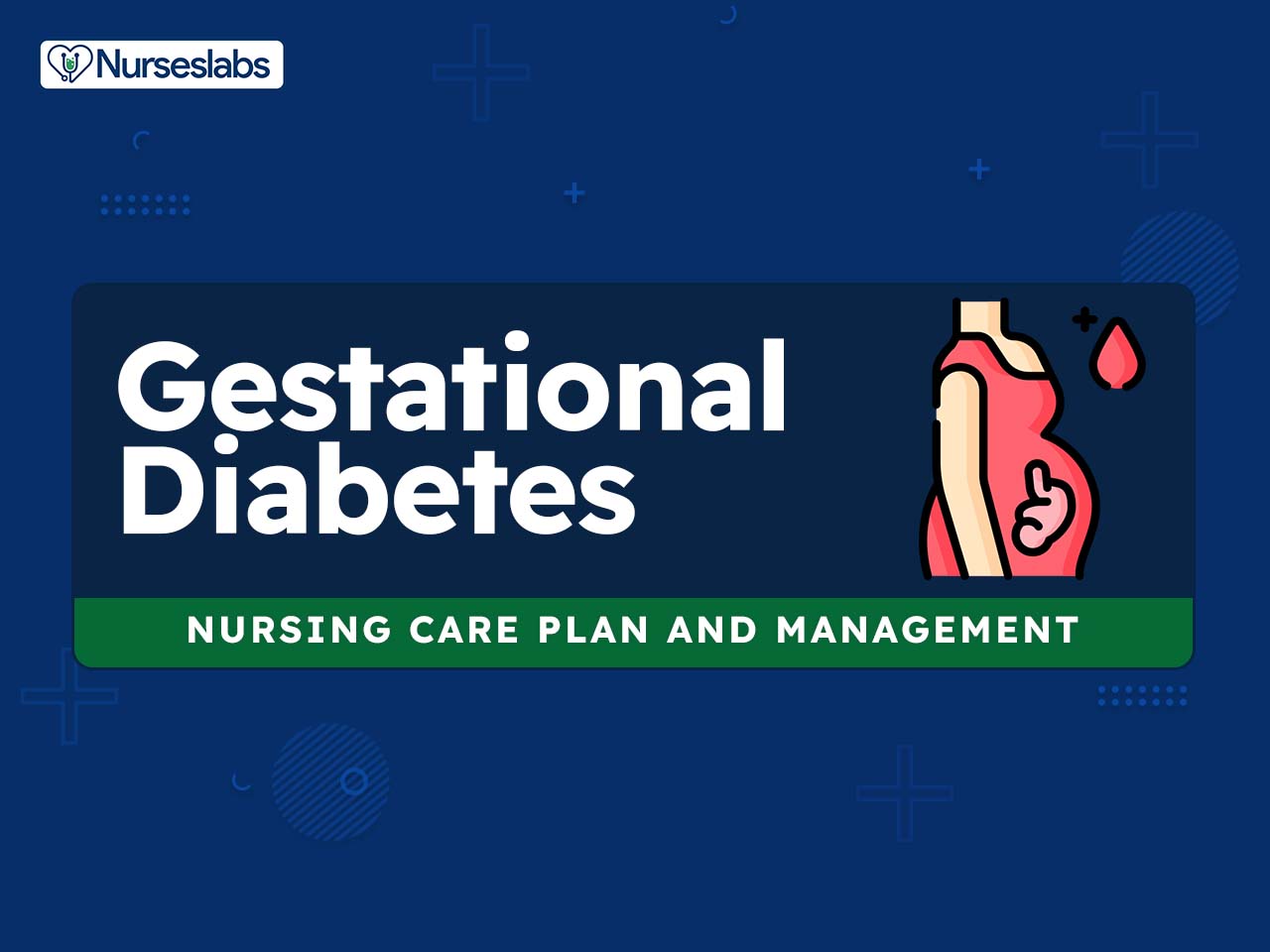
























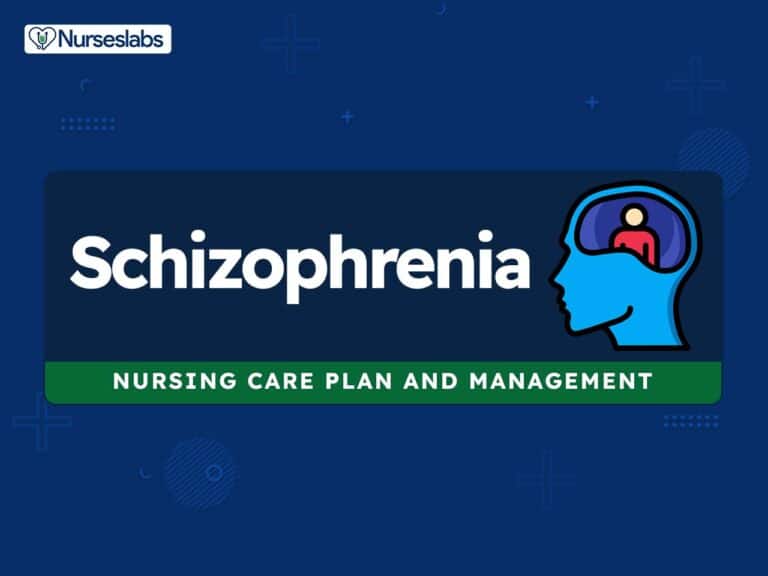
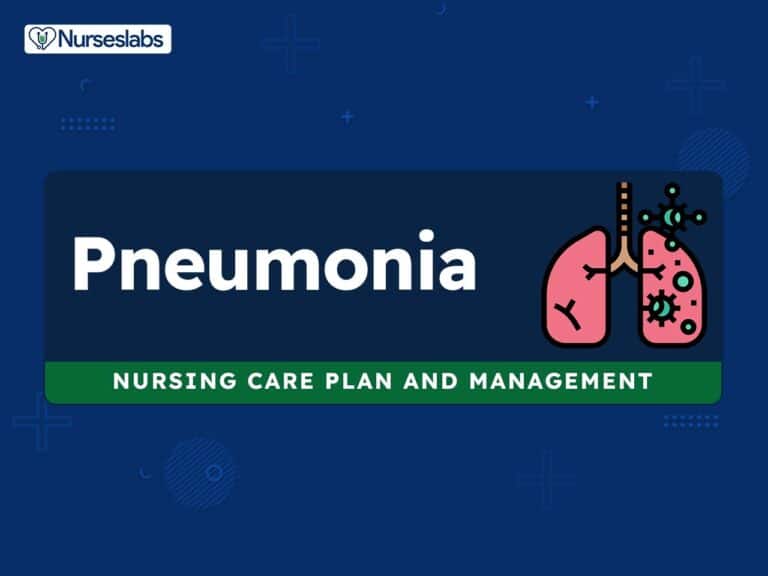

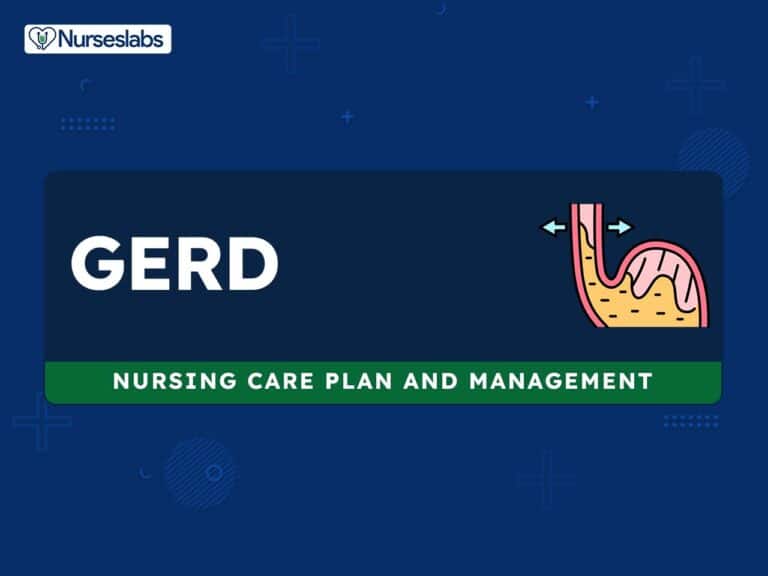
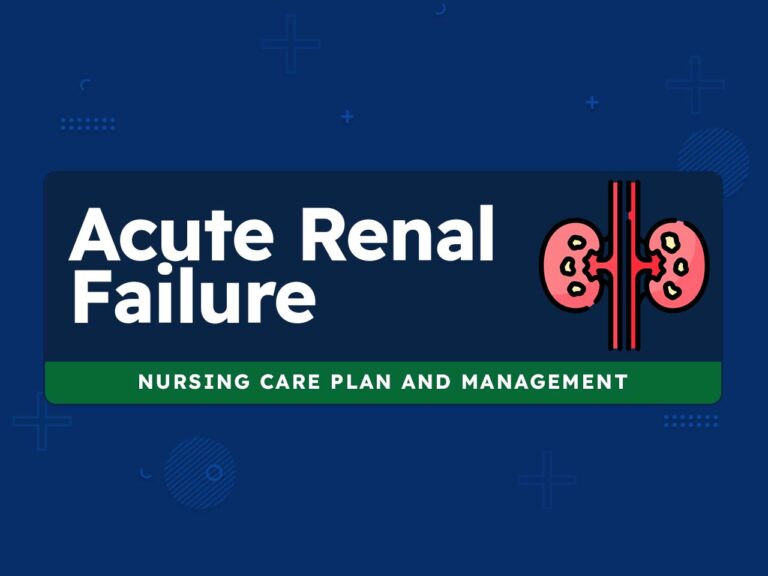




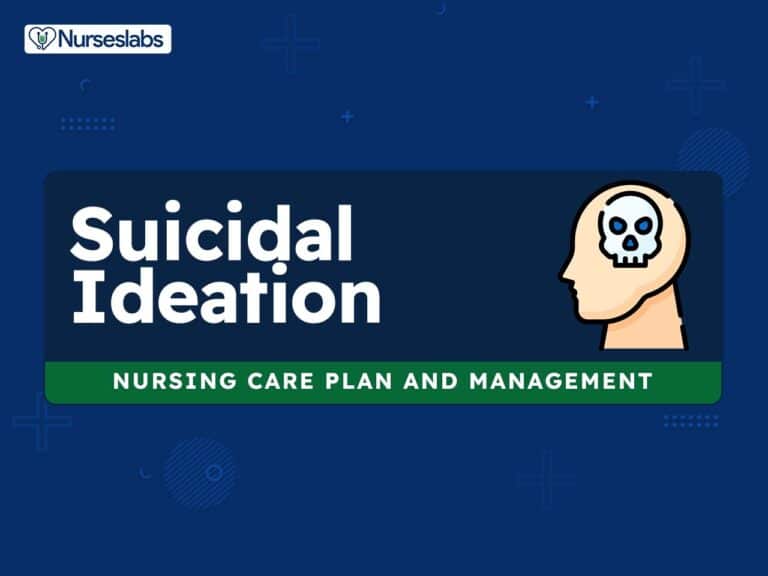

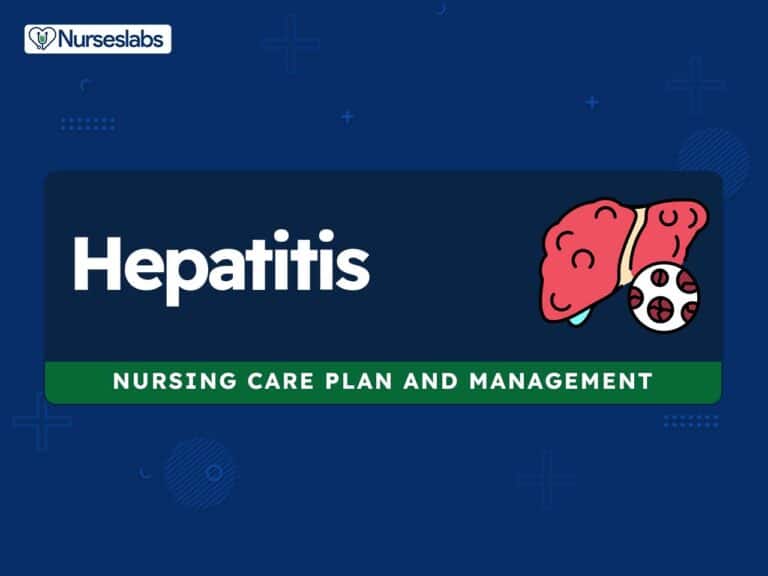
Leave a Comment